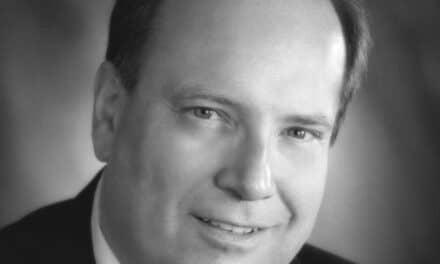 |
You would have to be living in a cave not to know that the health care delivery system is facing an enormous financial crisis, largely due to out-of-control costs. Although private health insurance companies, the Medicare/ Medicaid system, and pharmaceutical companies play a critical role in helping solve the problem, hospitals also share the responsibility of reducing costs. Today’s most successful and profitable hospitals have found that the key to cost containment and increased efficiency is to focus on operational improvement throughout their organizations.
In many instances, clinical and biomedical engineering departments have a larger impact on the hospital’s bottom line than other departments. Therefore, it only makes sense to run these departments as businesses with managers who are familiar with profit and loss statements, cost/benefit analyses, business plans, and strategic planning. This can be challenging for hospitals that promote or hire biomeds to managerial positions based on their technical performance instead of a strong business background. However, many in the field believe this problem can be solved if department heads lacking business backgrounds are self-motivated, committed to career development, and take advantage of continuing education programs offered by hospitals.
Jeremy Cook, CBET, director of clinical engineering for Methodist Le Bonheur Healthcare in Memphis, Tenn, is the perfect example of such a person. Cook, who oversees 26 biomeds in a seven-hospital system, worked his way up to management after spending only 4 years as a biomedical equipment technician. The turning point for Cook was when he was promoted to supervisor and took a business class.
“I realized then that I needed to talk the same language as the CFO, who I reported to at that time,” he says. “I recognized then that the financial world and the biomedical engineering world are closely aligned, since numbers are facts and engineering concepts are facts.”
Once Cook was able to understand the objectives of the financial leaders of his institution, it was much easier for him to map out what he needed to do to make the department more profitable. Cook went on to take a class, “The Fundamentals of Finance for Technical Executives,” at the Massachusetts Institute of Technology, where he learned the ins and outs of business strategies, return on investment (ROI), and projected margins.
Avoiding Outsourcing
Cook’s understanding of these concepts played a critical role in his ability to prevent Methodist’s clinical engineering department from being outsourced to a third-party service organization. Although Cook knew that having an in-house department would save the hospital system money, he had to prove it to administration. One crucial lesson he learned during this process was the importance of using hard facts and actual numbers when pitching a proposal to a CFO or other top hospital administrators.
When he made his initial argument for maintaining an in-house department, he used anecdotal information about the drawbacks of outsourcing, such as its negative impact on service, the difficulty of being able to start an in-house department in the future, and a general description of the cost savings when using in-house biomeds.
“This was my big mistake, because I learned quickly that they needed to see real numbers and not a descriptive account about the consequences,” Cook says. “Soft ROIs may be useful in the clinical world, but not in the support world, because we’re not directly impacting patient care as much as you’d like to think,” he says.
After obtaining advice from an in-house financial analyst at Methodist, Cook prepared the necessary Excel spreadsheets that proved his point: An in-house department would save the hospital about $750,000. When administration saw the numbers and was able to verify how they were obtained, Cook was granted the in-house department.
To improve efficiency, Cook used an ROI-based staffing model—unlike past models in which staffing was based on the number of pieces of equipment available in the clinical engineering department. Today, biomeds at Methodist are assigned to a specific modality, which instills a sense of ownership. “They work smart to ensure that their service line is profitable and will return money back to the organization,” Cook says.
For example, biomeds are creative in determining how to keep specific machines up and running, such as by providing more preventive maintenance than what the manufacturer recommends and adding procedures not included in the service manual.
Hiring the Right People
According to Cook, it is critical to hire the right employees, called associates at Methodist. He has found that the staffing model he uses appeals to biomeds with experience in third-party service organizations because they are accustomed to autonomy. “It’s a win-win situation for both the new hire and for us because the job we offer doesn’t require travel, but still gives them independence.”
Cook, however, also was forced to address the fact that many long-time associates were resistant to change. One of the best examples of this was in parts ordering. When a part was needed, many biomeds would order an additional one, thinking they would not have to handle the paperwork the next time a part was needed. However, the resulting inventory of unused parts was costly. “It doesn’t make sense to maintain large inventories anymore with Fed Ex capable of delivering parts stat, so I implanted a just-in-time inventory system that has reduced our storeroom down to virtually nothing.”
Repair protocols have also been established within clinical engineering to increase efficiency. These are structured so that at the 2-hour mark during a service call, the associate has to contact the manager of clinical engineering to describe the progress of the repair. If additional work is still needed, an estimated completion time is given. At the 4-hour mark, the job is automatically assigned to the vendor if there is no evident resolution. When it is still unclear whether or not to send the equipment to the vendor, a manager makes this decision.
Cook stresses that the key to building an efficiently run department is to offer and encourage continuing education. Methodist recognizes that a well-trained and well-educated staff is essential to help reduce costs. After the hospital system implemented a six-figure continuing education program, parts orders decreased, the number of escalated calls to vendors went down, and Methodist’s in-house biomeds eventually became more knowledgeable about the equipment than many biomeds working for third-party service organizations or vendors.
Charlie Garrard, managing partner for the Boston-based operations and management consulting firm Stroud, works with hospitals to help them develop customized improvement practices that strengthen their financial positions. Here are several general guidelines Garrard provides CEOs and CFOs that are also applicable to clinical/biomedical engineering departments:
“You have to tie continuing education to an ROI,” Cook stresses. The equation he used to convince administration of the importance of this resource was continuing education plus adequately paid associates equaled cost savings.
Cook recognizes that he was able to make his department stronger in large part because of the economies of scale that a large hospital system provides. But he is quick to point out that smaller hospitals can work with other hospitals to maximize volume through collaboration. “Instead of each of the hospitals having its own anesthesia specialist and vent specialist, they could possibly share these services,” he suggests.
Centralization Is Key
Five years ago, when Alan Gresch, manager, clinical engineering, capital equipment services, assumed his position at Milwaukee-based Aurora Health Care, he encountered many of the same challenges that Cook faced. Although it took years to accomplish, Gresch ended up centralizing the department, which resulted in more than a $2 million savings for the 13-hospital system. With two more hospitals in the planning stages, Gresch currently oversees four regional managers, and services are broken down into four distinct modality groupings: two imaging groups, general biomedical engineering services, and specialty biomedical engineering services. Each manager has systemwide responsibility for one of these modality groupings in addition to regional responsibilities, and is assigned a supervisor who establishes policies, procedures, and best practices.
Centralization allowed Gresch to create a main call center that has increased efficiency in the department. Three employees take calls and then immediately route them via e-mail to the biomeds’ Blackberries.
“In the past, we had difficulty with clinical staff when they preferred to always contact the same person who was familiar with their equipment,” Gresch explains. “This is fine, but what do you do if you the biomed they’re trying to reach is on vacation or is busy in another area?”
Now, customers do not have to place a call and wait for a reply. Every single device in the department’s inventory has a primary, secondary, and tertiary technician assigned to it, and there are three levels of leadership over that particular person. Gresch has developed metrics that show callback response times and on-site response times, which he constantly evaluates seeking areas of improvement. This information is shared at quarterly business review meetings with Aurora’s regional vice presidents.
Parts procurement is another area that Gresch streamlined. In the past year, his department codeveloped a parts module with its maintenance-management software vendor. Now, biomeds no longer have to shop for parts. Instead, two employees with strong core competencies in parts acquisition were assigned to this task.
When a biomed needs a part, he or she types this into a work order and sends it electronically to the parts specialists. The biomed then receives three notifications through a Blackberry: a confirmation that the parts order was received, a message stating that the part has been ordered and its expected arrival time, and a final message that the part has arrived at a specific location.
Centralization also has helped Aurora to begin development of a systemwide disposal/acquisition program that allows associates to see exactly which equipment is available throughout the organization. “In some cases, a department may no longer need a piece of equipment, but another department would be happy to acquire it,” Gresch says. With expected implementation in early 2008, the disposal project—called the Asset Investment Recovery program—will also involve harvesting parts and selling equipment to others, which will render a financial benefit to Aurora.
|
Read other management strategies in past issues of 24×7 by searching for management strategies in our online archives. |
 |
Although Gresch’s department is much more efficient and cost-effective than when he started the job, he stresses that there are always areas that can benefit from improvement. “Just as with any business, you have to deliver a long-term strategy,” he says. “It’s essential to have a vision about where you want to go and what you need to do in order to get there.” Once this vision is formulated, Gresch says it is essential to get the staff excited about this long-term strategy. “If they’re motivated as much as you are, they will help you carry out that vision.”
In today’s health care environment, all health care organizations are feeling extreme pressure to reduce the cost of health care. Clinical/biomedical engineering is well positioned to help with that effort. For clinical and biomedical engineering directors who do not have strong business backgrounds, Gresch recommends that they seek out mentors, take business classes, and study on their own—all things he did because he did not have a business degree. He stresses that there are really only two types of biomedical/clinical engineering departments: those with strong business strategies and those waiting to be outsourced. This is because in today’s health care environment, along with maintaining and increasing the quality of patient care, cost containment is a top priority.
Carol Daus is a contributing writer for 24×7. For more information, contact .





